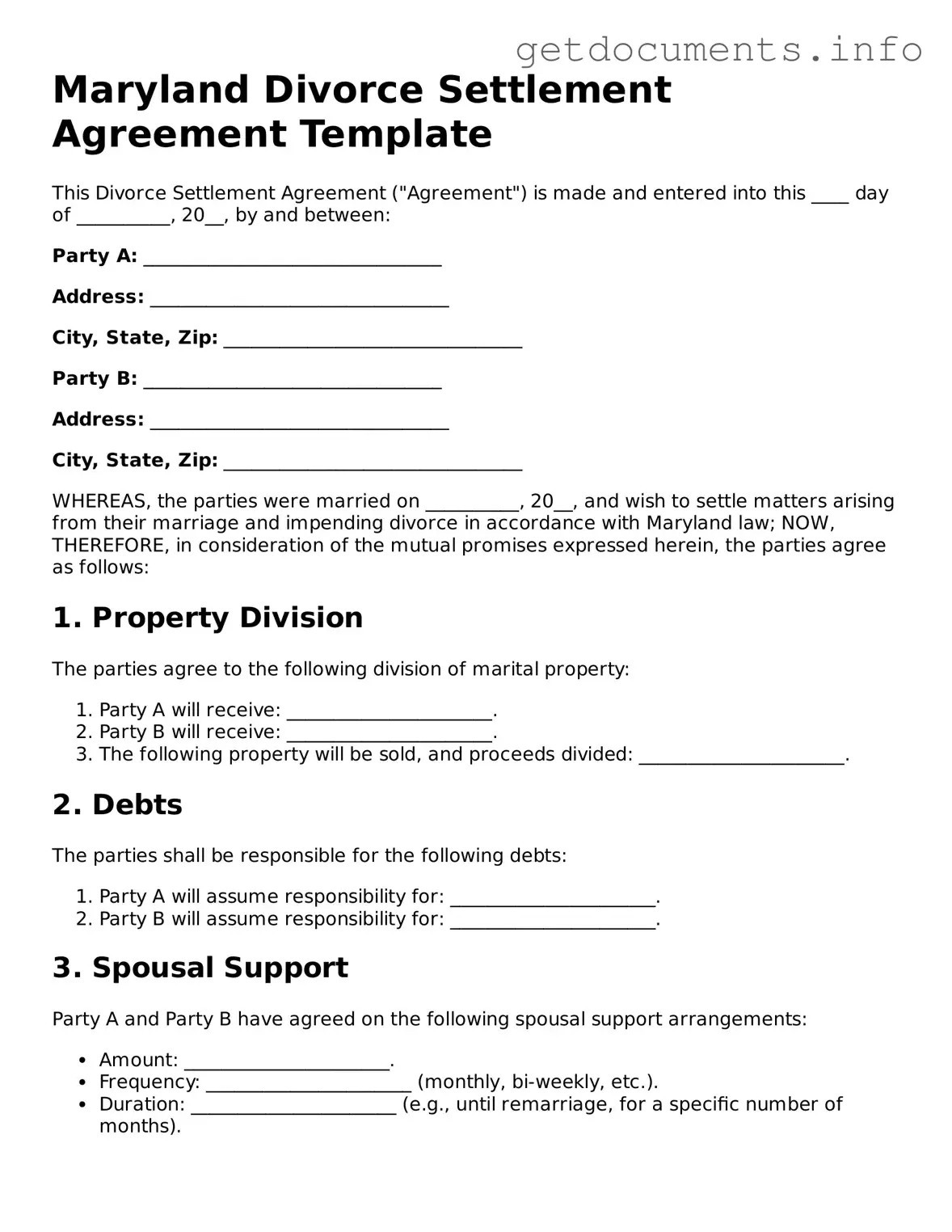Free Divorce Settlement Agreement Template for Maryland
The Maryland Divorce Settlement Agreement form is a legal document that outlines the terms of a divorce between two parties. It covers important aspects like asset division, child custody, and support arrangements. Understanding this form is crucial for a smooth divorce process, so take the first step by filling it out today.
Click the button below to get started!
Access Divorce Settlement Agreement Editor
